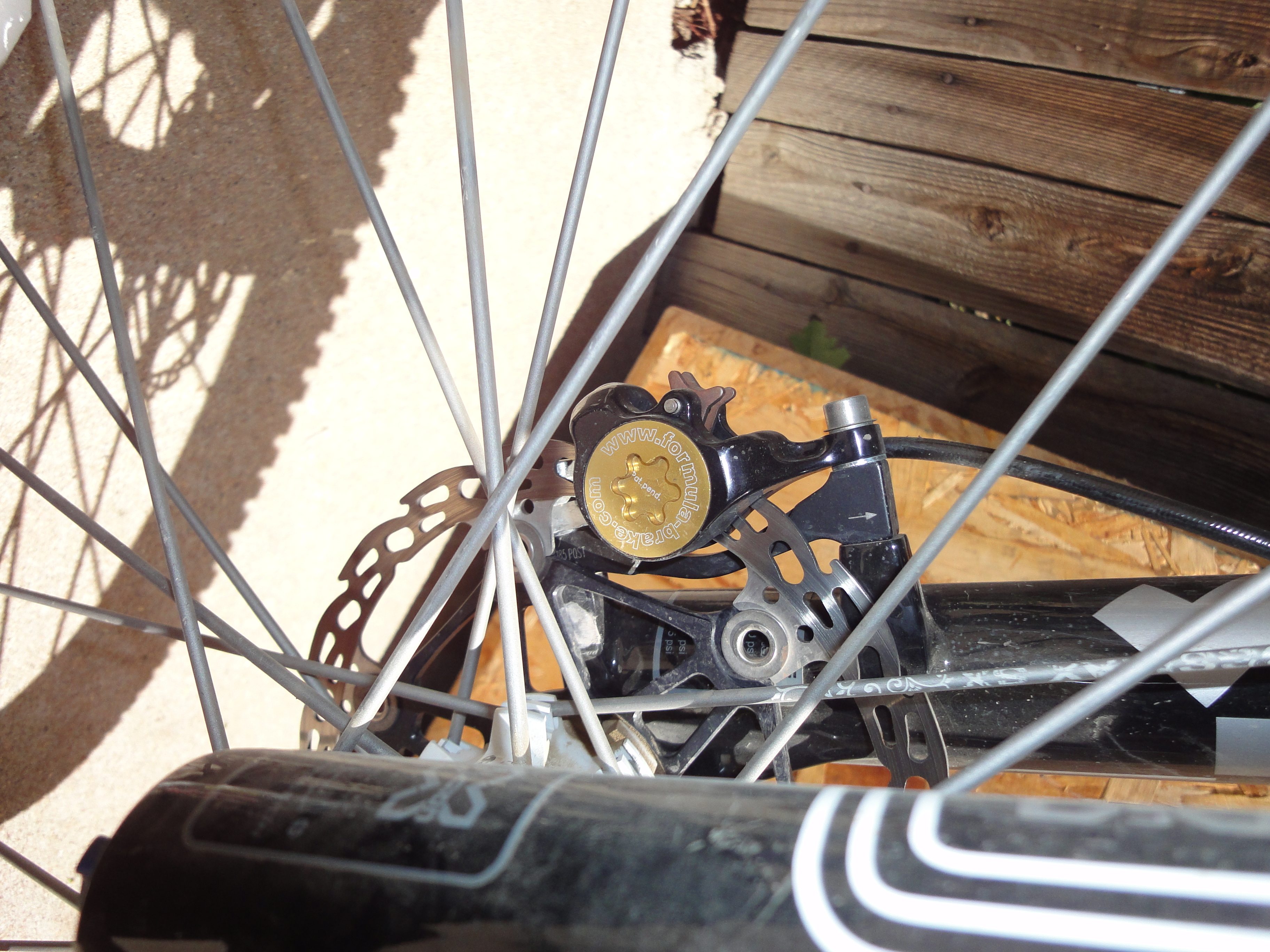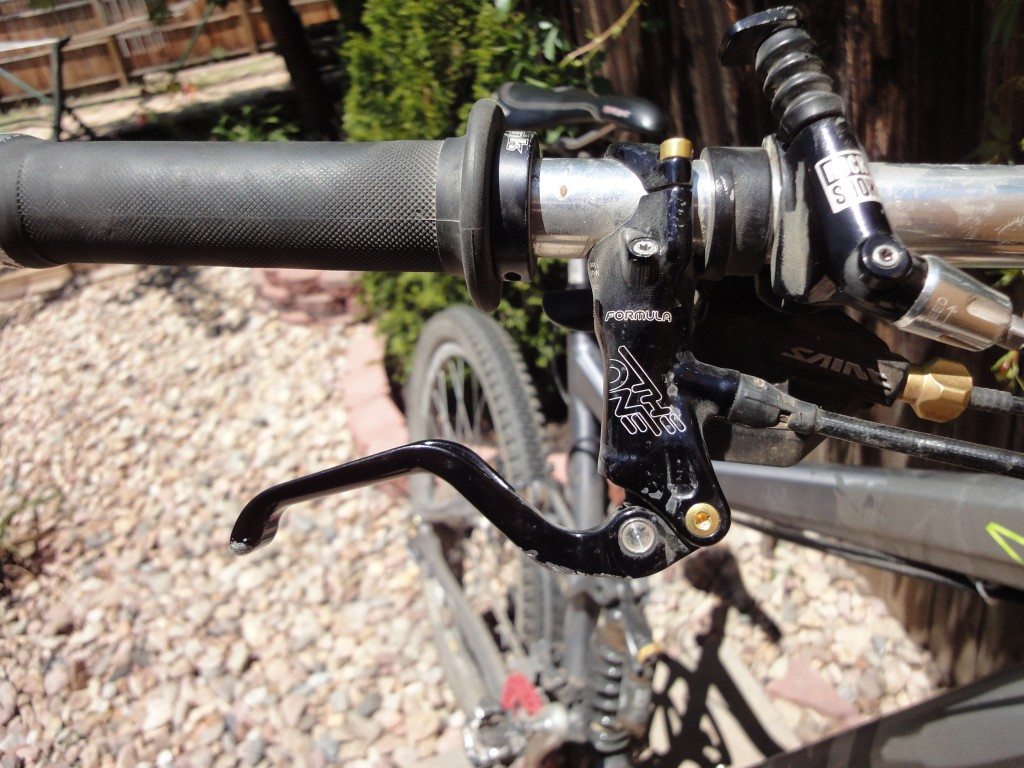Component: 2010-2011 Formula THE ONE Brakes
Intended Use: DH Race, freeride, trail.
Rider: 6’2”, 205 lbs., athletic, technically proficient, modestly fast and relatively fluid.
Test Location: Colorado Front Range. Steep, fast, rough, rocky trails, with plenty of small and large jumps. Generally rode in dry, dusty, loose over hardpack, pebbly terrain.
Duration of test: 50+ days of riding on a trail bike (Giant Reign X) and a 40+ days riding on a DH race bike (Morewood Makulu).

I extensively tested the Formula THE ONE on both my trail and DH bikes. They have proven themselves winners, but there are a few points that should be considered prior to purchase.
Formula THE ONE brakes are some of the lightest brakes on the market, be it XC, trail, or DH. The weight of THE ONE comes in lower than the Avid XO brakeset (by 10g per wheel) and the Shimano XTR brakeset (20g per wheel). THE ONE are also some of the most powerful and best modulating brakes on the market, thanks to the huge 24mm pistons on the caliper. THE ONE rival or outperform the most powerful heavy-use brakes such as the Shimano Saint, Hope V2, Magura Gustav, and Avid Code. Their ability to control a quickly-moving bike on steep, loose terrain is really as good as anything out there.
My THE ONE brakes also have proven to be quite durable and long-lasting, with minimal need for attention. Neither set are even close to needing a bleed. The lever feel is perfect, as good as it was from the factory. I do not, however, love the rotors that Formula is currently offering. They definitely flex, are loud and squeaky, and don’t last that long; I ended up replacing both the front and rear rotor on my DH bike at 40 days of use. The rear was completely toasted, and the front was rather noisy. I replaced them with some XT-level Shimano rotors and had no issue. On my trail bike, I have been using Hope floating rotors without issue either.

One additional gripe is that pushing the pads back out is rather difficult, compared to an Avid or Shimano, so it takes one or two days of riding to fully bed in the new brake pads. When bedding them in, the lever has very limited pull and the brakes are very touchy. As the pads wear, the pad contact point gets farther and farther away at an alarming rate, and I personally needed to replace the pads when they were 50-60% worn, otherwise, the lever would bottom out on the body.
These issues are easily remedied by adding the aftermarket-available FCS adjustment knobs, which change the pad contact point, in a similar way that the Avid brakes work. Considering the expense of these brakes ($500+ per wheel, not including rotor), having to add a $60 per wheel adjuster is hard to justify and is grounds for complaint. That said, I would strongly suggest purchasing the FCS adjusters should you purchase these brakes; you will get the most out of your brake pads’ life, and the bed-in process with be a less trying experience.
These brakes are not cheap. In fact, they are one of the more expensive sets of brakes on the market. They are not without their quirks, and they really benefit from a fairly expensive upgrade. But they are some of the lightest brakes (Formula also offers the R1 brakeset, that uses a slightly smaller 22mm piston, saving 40g per wheel) and the best-performing downhill brakes on the market. THE ONE brakes deserve consideration on any downhill, freeride, or trail bike—or even on XC race bikes if you weigh over 180lbs.
They perform spectacularly well, and are insanely light.
